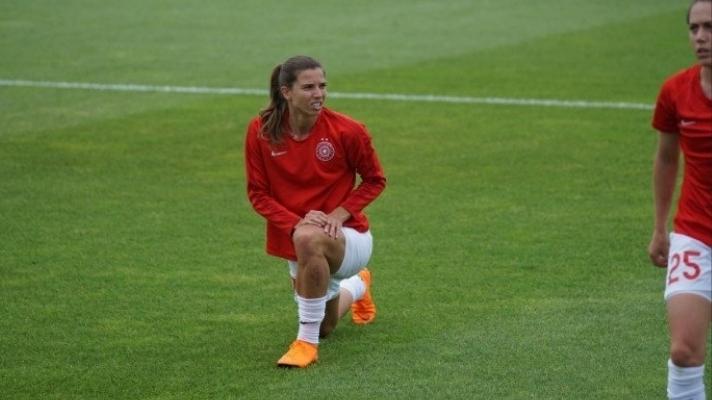Plenty of ordinary folks who play sports regularly forget just how essential it is to stretch before, and even after, a big game. What’s more, is that you need to be consistent about stretching.
Importance of Stretching
After all, regularly performing soccer stretches bolsters a player’s muscle mass and inherent physical dynamism. The end result diminishes the possibility of serious injury, in addition to increasing flexibility that allows players to recover in good time.
For this article, we’re going to walk you through the basics of soccer warmup stretches as they relate to gameplay: in other words, why it matters that you stretch before practices AND games (no excuses), what injuries you may or may not sustain on the field and how you can avoid them, and then we’ll outline some of the stretches themselves.
The human body needs to feel agile and limber before it’s ready to do any physical exertion.
This is especially true for any kind of athletic game or spectacle – in this case, soccer. Even just a few simple warm-up stretches before you march out onto the green will reduce the chance of injuries, cramps, or any other serious physical setbacks.
You need to warm up your muscles before you put them to work. Any physician, trainer, or serious athlete will tell you some version of that.
You’re not only giving your legs a workout, but also your core, and other parts of the body that you may or may not even be aware of during a match.
When you’re in the midst of a game, your muscles can tense up. If this isn’t tended to in due time, it can lead to cramps, or worse, serious injuries.
If players don’t stretch regularly, there’s a serious chance that they could rupture their ligaments, or even put themselves on the path to a kind of career-killing fracture or something equally dismal.
So, don't ever skip stretching! You almost have to give your muscles a kind of pre-game workout; what you’re effectively doing is getting your muscles prepared for the hell they’re going to be put through over the course of an average game.
There are a few basic football stretches that will help ensure that you don’t strain or pull anything that might hinder your game, although we’ll get into most of those in the following section.
The prototypical lunge stretch, which you often see people practicing at the gym, is one of the most functional and helpful stretches that one can perform before a match.
Lunges involve placing one leg in front of you and effectively dropping one’s body by bending the knee of that aforementioned leg, keeping the toes straight all the while.
The lunge is a simple and easy stretch to perform. It'll stretch the hip flexors, the calves, and the gluteus maximus muscles as well.
Calf and hamstring stretches are also supremely helpful before a game. For a solid hamstring stretch, try the standing quadriceps stretch, which involves spreading the legs and stretching the thighs as you pivot your torso towards one foot.
Common Injuries To Avoid
Of course, if you’re planning on avoiding injury whilst on the soccer field, you have to know what injuries you’re technically setting out to avoid.
Nobody wants a concussion. Or groin strains, hamstring pain, or leg injuries either. These are not that common.
Hip injuries however are quite common in soccer, with particular cases including the anterior cruciate ligament strain, or ACL, as it’s more commonly known.
Stretching the hip flexors and hip joints will combat potential injuries, as will the use of core exercises meant to bolster a player’s midsection.
We recommend the standing hip flexor stretch for this one, or the enduring lying hip and lower back stretch). Lower leg injuries can also be brutal: shin splits, sprained ankles, even blows to the Achilles Tendon!
Then, there are specific conditions like PCL, a.k.a. Posterior Cruciate Ligament, as well as torn meniscuses, and tendon injuries.
In terms of fighting these off, it’s all about improving overall muscle strength, but doing in a way that minimizes potential physical risks. The most common physical injury that occurs during a soccer game is a hamstring strain, which accounts for well over half of soccer injuries.
Hamstring injuries are often a result of players running at high speeds and winding up for a big kick; said action extends your hip and also your knees past the point of what’s healthy.
Hamstring injuries, in fact, are so common, that it’s estimated that roughly 33% of players will suffer another form of a hamstring injury, given they endure a first one.
The only way to ameliorate and minimize hamstring injuries involves reducing risk factors and avoiding the urge to return to a game after an injury has seen you sitting on the bench.
And that gets to one of the most important variables at play when it comes to reducing injury: injury prevention. Stretching regularly keeps hamstrings and quads strong, and thus far more formidable when dealing with the threat of potential in-game injury.
Dynamic Stretching and Warm-Ups
Below is a list of a few dynamic stretches that will help get you ready for the big game:- Butt-Kicks: This one’s simple and fun: a cardiovascular flex that will get your heart rate pumping. Highly recommended for the faster players on your team, or for those that like to run.
- Frankensteins: No, it’s not just a classic horror movie… it’s also a dynamic soccer stretch meant to aid pain relief and warm up your hamstrings. Also referred to as the “Frankenstein Walk.”
- Knee Stretches:
- High-Knees: This stretch, which involves grabbing your shin and pulling your knee in towards your chest, is designed to stimulate and warm up the glutes.
- Knee-Hugs: Simply lie down with bent knees and lift knees to your chest at a roughly 90-degree angle with both hands placed around them. This one in particular comes in handy before practice.
- Closed Knees: This one is a compliment to the open knee drill. To perform, lift one leg up and outward (away from your other leg) before bringing it back in. Follow this by repeating with the other leg.
- Open Knees: More or less analogous to the closed knee drill that was just described… but with, you guessed it, open knees!
- Lateral Hip Swing: A truly clutch drill that involves holding onto a pole while standing and working the abs as you swing your legs out in front, and back behind you. Switch sides and repeat as needed. The best part? No equipment is necessary!
Share on:






























